
I’m lucky to have a job that allows me to work from home, as well as an employer willing to pivot and have employees work remotely earlier this year as COVID-19 cases began to rise. With a three-year-old running amok in the house, I was compelled to move my workstation into the basement – neglected since we moved here a few years ago. I’m now working out of the basement guest bedroom, which was only inhabited by spiders for a very long time (just one of the reasons why we have a Giant Spider Invasion poster hanging down here). The main part of the basement, separate from the bedroom, has a nice layout – it’s a walk-out with big windows, with a brick fireplace dating from when the home was built in the 70’s – but the ceiling was a sorry affair, the tiles and frame sagging claustrophobically in the center and at least preventing any basketball players from visiting us.
I began to think about how, since moving into this house, I’ve never had a really good place for my movie collection, which continues to expand. While my stuck-at-home restlessness led to other home projects, I began to research and sketch out ideas for displaying them in the style of a video store.
As a child of the 80’s, I grew up around video stores. I have early memories of my family renting VCRs and laserdisc players so we could watch 20,000 Leagues Under the Sea, The Empire Strikes Back, and The Elephant Man. The video store also offered glimpses of forbidden fruit, with come-hither VHS covers displaying sex and violence that was off-limits viewing in my household (not to mention those mysterious side rooms with beaded curtains or swinging saloon doors). When I was in college, I took a summer job at a Planet Video in Milwaukee where we could bring home free movies and stale popcorn nightly. At one point, I squeezed a giant cardboard standee of John Carpenter’s In the Mouth of Madness into my car, and it received temporary residence in my parents’ living room. And I have fond memories of wandering off campus with friends for long walks to various video stores on a Friday or Saturday night. There were so many back then, you had plentiful options within walking distance.
So I love video stores, but I understand fully why they’re not long for this world. I may be a physical media devotee, but I’m part of the problem: I never think for a moment of venturing out to find one of the few remaining stores – and haven’t for a couple years, not since I lived across from a Family Video. I have the same excuse that you probably do – the convenience of at-home options. Yet I feel nostalgia for browsing the shelves, discovering some film I’d never heard of before, or getting a recommendation from a knowledgeable clerk.
Back to my project. The main problem was acquiring the proper kind of shelves. I wanted gondola shelving to create two-sided aisles, however short they’d have to be in this space. Most retail gondola shelves are utilitarian, functional – not intended for videos specifically. Video store shelves had a narrow look, made for displaying tapes or disc cases, whether the shelves were wooden or wire. There are a few websites where you can buy such things, but whether new or used, the shipping is costly – often as much as the item itself. More reasonable options are to look for (a) a video store closing or recently closed, or (b) a physically nearby outlet that sells used retail fixtures you can haul away. For option A, I checked out my nearest, recently closed Family Video, but the space had already transitioned into a dollar store.

While weighing option B, I realized I needed to get the basement ready before crowding it with shelves. That meant replacing the ceiling itself. I decided to go with drywall, and hired a contractor due to the work effort and complexity. (I won’t bore you with the details, but what was above the suspended ceiling offered a lot of little problems that would involve some carpentry, electrical, and complicated drywalling. And I write a blog about exploitation movies.) The fact that so many of our plans for 2020 had been cancelled, and that we’d pulled our virus-sponge son out of daycare, left us some wiggle room in our budget, so my wife and I agreed to get it done right. And in the summer months while making arrangements with the contractor, I began to scour eBay for video store memorabilia to add to the authenticity of the experience, as well as some basics like a restroom sign and a faux-neon “Open” sign for the basement entrance.
While construction was underway in mid-September, a friend shared on Facebook that the Family Video across from my old house was closing permanently in October. The news, however well timed, was bittersweet. This was a store that I used to frequent myself. Arrangements were made to take 6 shelves off their hands, which later became 7.

Left: Family Video. Right: Shelves waiting in the garage.
Though I have a decent collection of movie posters to display, I scoured eBay for video store memorabilia over the summer, and acquired a few choice items to lend the appropriate vintage atmosphere. (Though I did end up with a Raiders of the Lost Ark mini-display that didn’t break the budget, when it comes to video store collectibles, the more popular franchises – and horror in general – tend to be more expensive. Anything related to Back to the Future or Star Wars might stretch your wallet.)
As the contractors wrapped up work, I finally moved the shelves into the basement and began the unpacking and decoration process. Ostensibly, the fun bit. But there were issues I’d never considered before. How does my collection fit into standard video store categorization? Do I have enough action movies to constitute an “Action” section? Do I combine dramas and thrillers? What about comedy-dramas? What about science fiction horror? (I decided to give my overstuffed horror section a little breathing room and move titles like Alien, Prey, and Xtro into SF.) I’m still working some of those issues out, but the gallery that follows is the mostly finished product, my private video store that doubles as a museum exhibit for a lost civilization.

Below the Open sign, the first view of Midnight Video.


“Innocent Blood” (1992) vintage standee (hiding my dogs’ kennels).

Example of shelf sub-category labels.

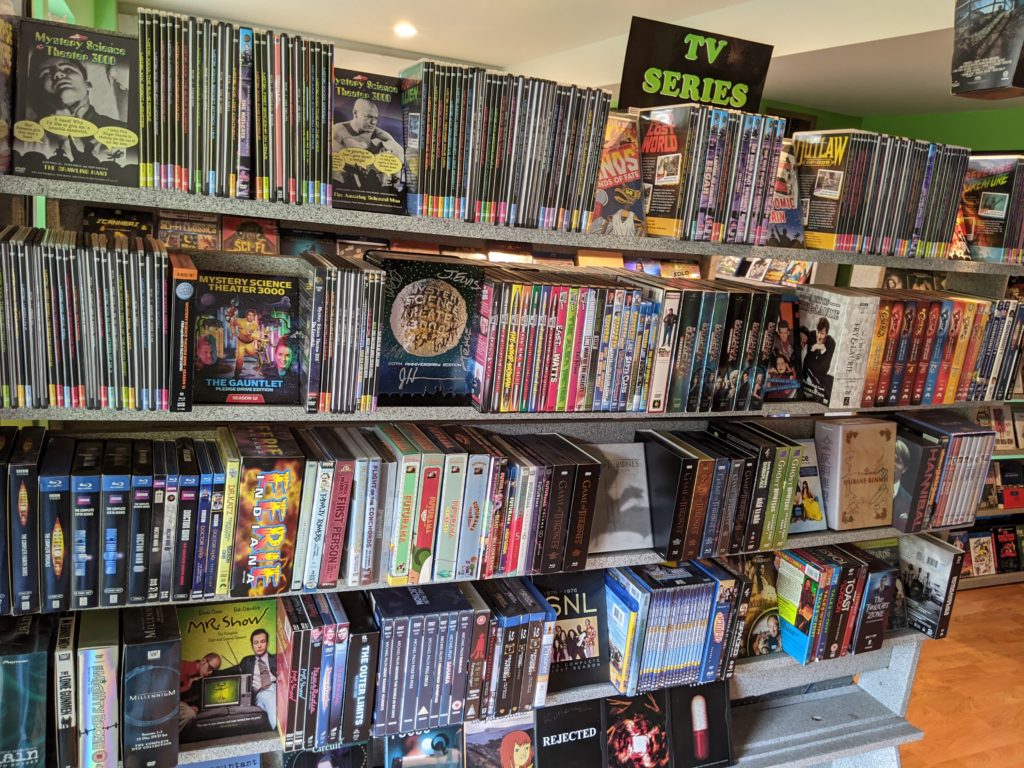
The “TV Series” section, heavy on the MST3K.


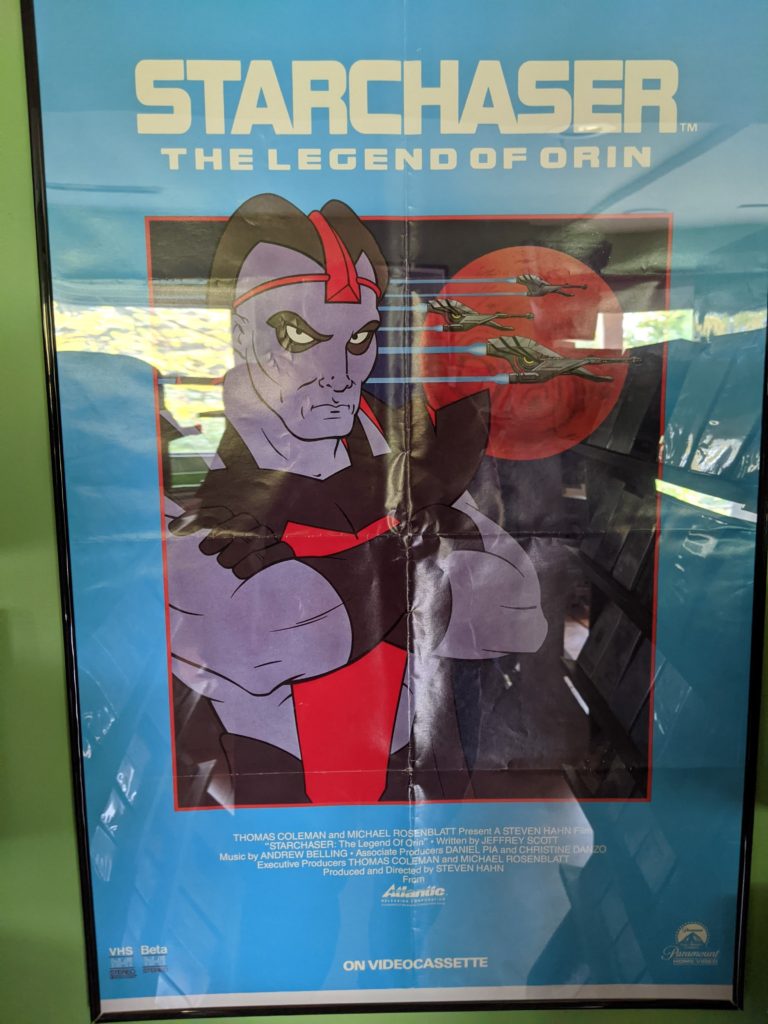
Vintage video store poster for “Starchaser: The Legend of Orin” (1985) the PG-rated 3-D animated film.


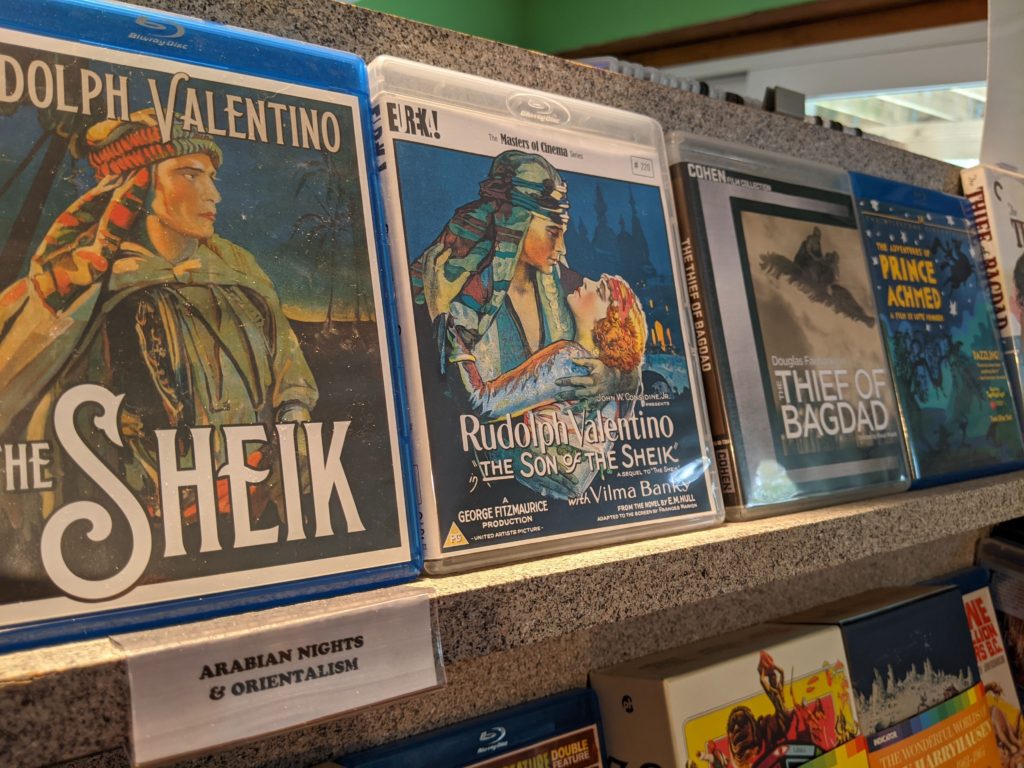


My son chose his own aisle and put the videos on the shelves himself (those he could reach). I won’t hold him to alphabetical order…
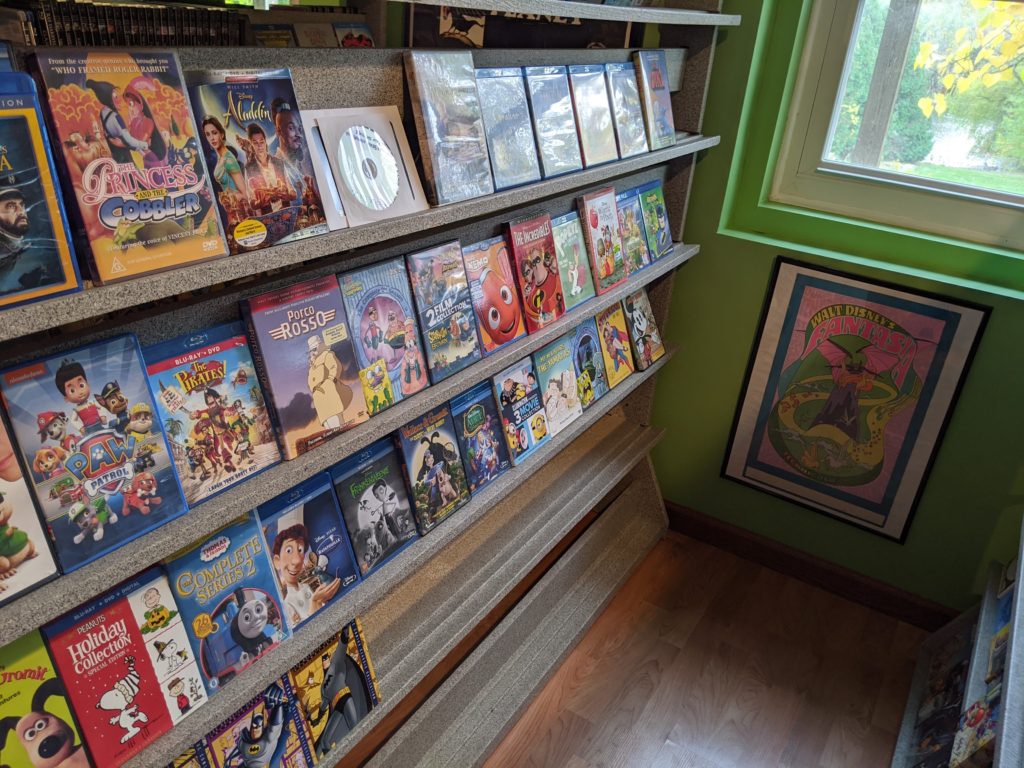
Next up is installing curtains in the windows to prevent the covers from sun fading.

Original “12 Monkeys” (1995) three-sided video store standee.
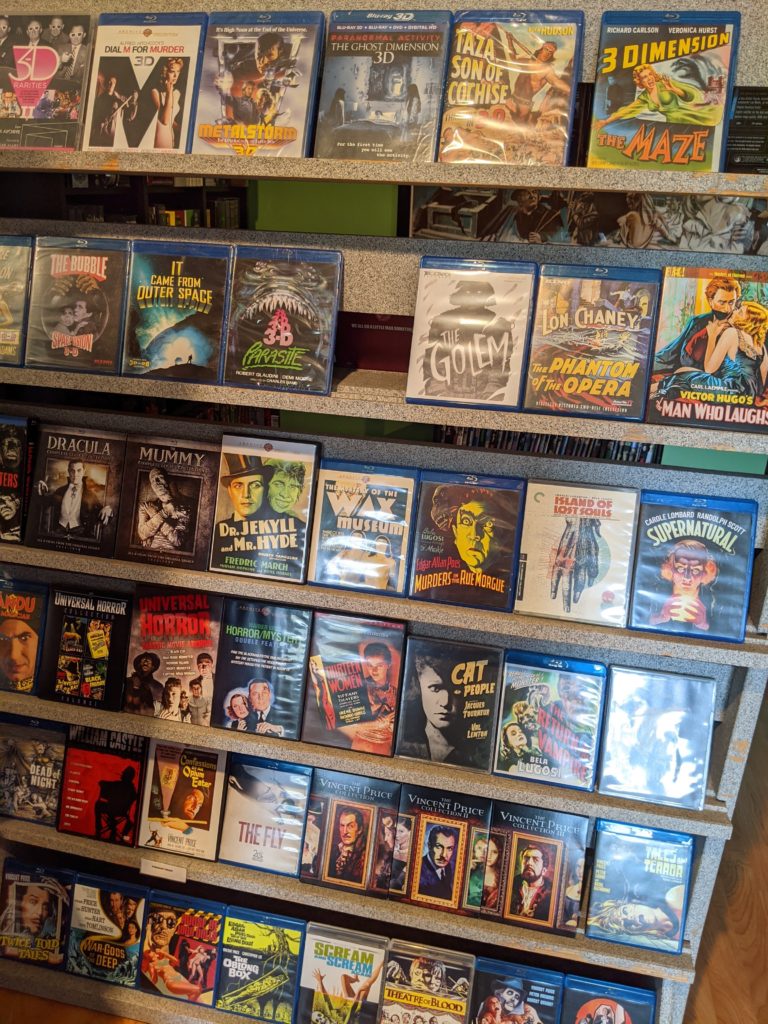


The horror alcove, with a media cabinet to hold box sets of different genres. Hammer films on the little shelf (along with Amicus and the Blind Dead box set).


This is the “screening room” section at the back of the video store (er, a TV and my wife’s old college futon, decorated with some new pillows since the dogs ate the old ones).
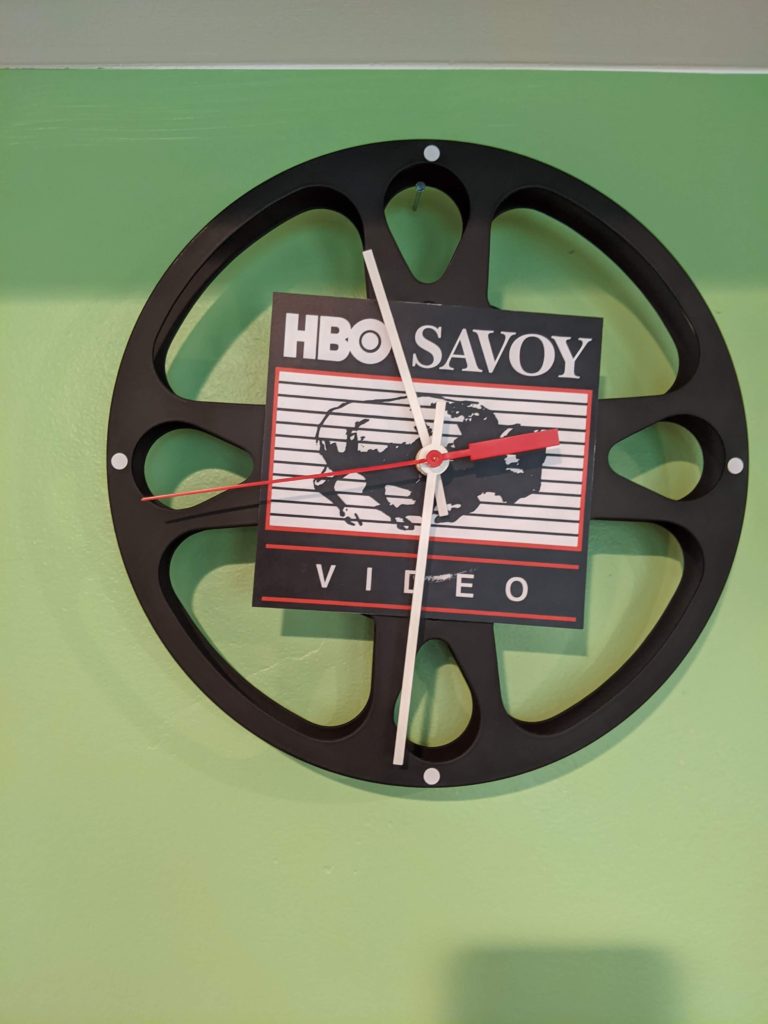
1990’s era HBO Savoy Video promotional clock.

“Raiders of the Lost Ark” mini-standee. Note the “coming soon” at the bottom right advertising the impending theatrical release of “Indiana Jones and the Temple of Doom.”

“A Fish Called Wanda” video store “aquarium” display.


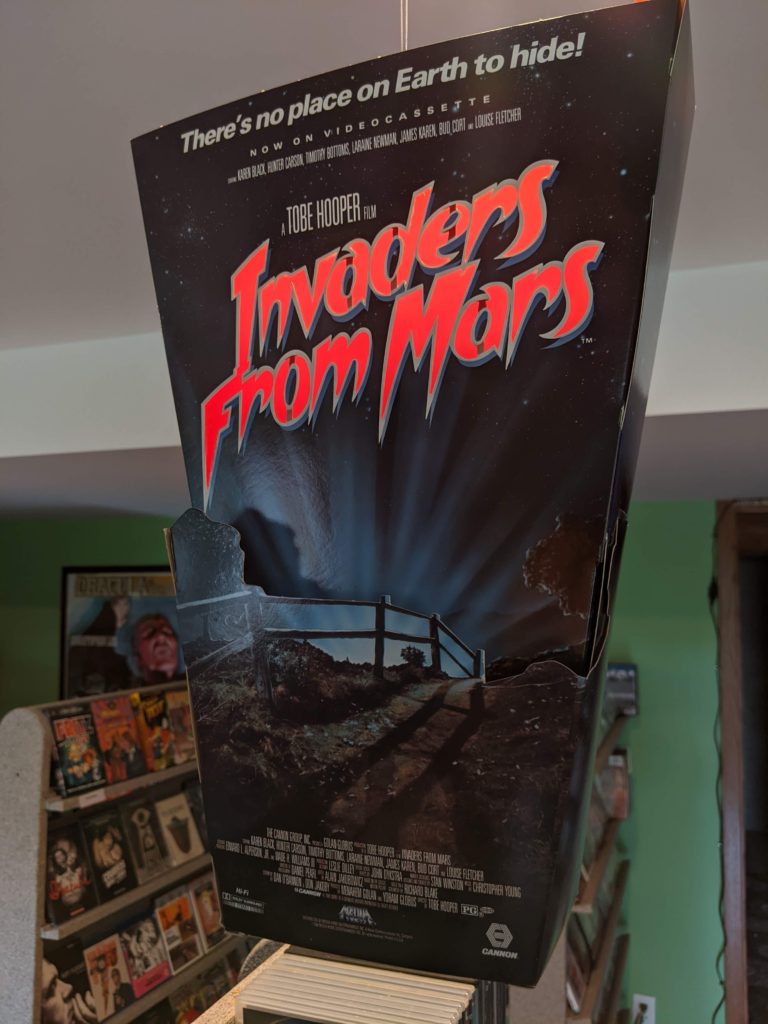
“Invaders from Mars” (1986) mobile with letters that appear to glow when hanging under a light like this.


The door to my work-from-home office/guest bedroom.









